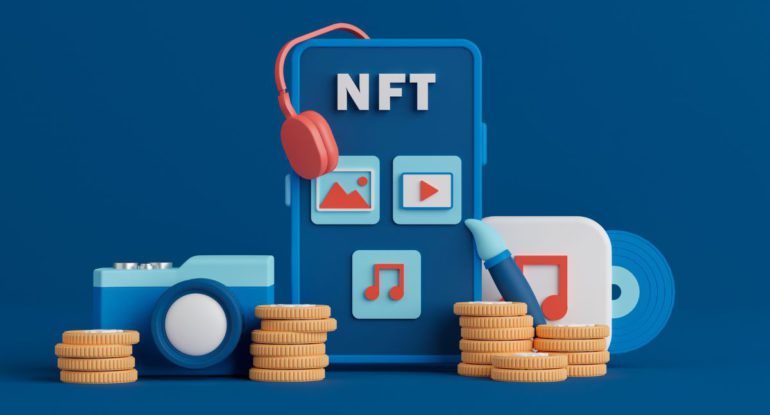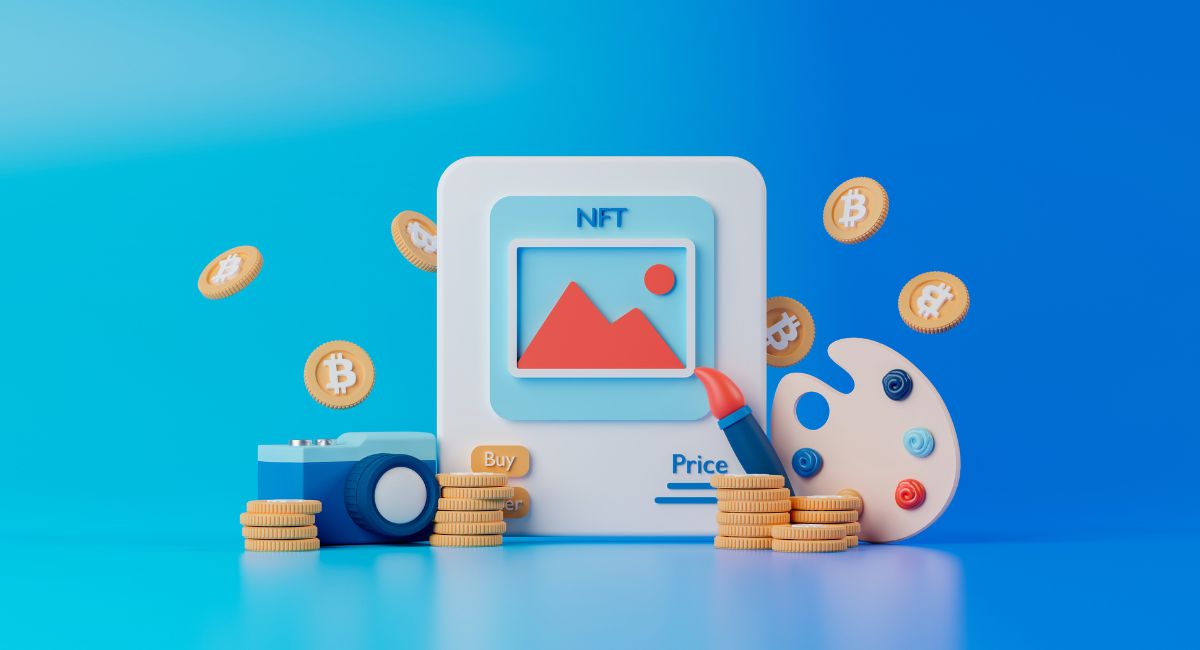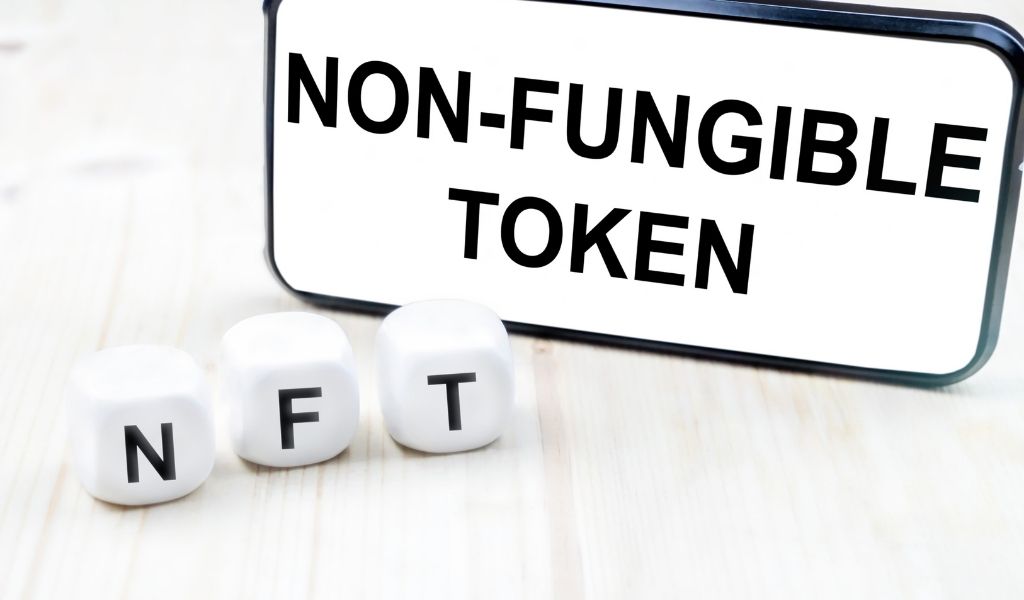Top 4 Intriguing Ways Investing In NFT Is Different From Investing In Crypto

Investing in NFTs (Non-Fungible Tokens) involves purchasing digital assets representing unique items or pieces of content, such as artwork, music, collectibles, virtual real estate, or in-game items, on blockchain platforms. Unlike cryptocurrencies like Bitcoin or Ethereum, which are fungible and interchangeable, NFTs are indivisible and cannot be replicated, making each token distinct and verifiable.
Investing in NFTs offers several potential benefits and opportunities. Firstly, NFTs provide ownership and provenance verification for digital assets, addressing the issue of digital scarcity and enabling creators to monetize their work in the digital realm. NFTs also facilitate fractional ownership, allowing investors to buy and sell shares of high-value assets, thereby democratizing access to investment opportunities in the art and collectibles market.
Furthermore, investing in NFTs can offer diversification benefits for investors seeking exposure to alternative asset classes beyond traditional stocks, bonds, and commodities. NFTs represent a burgeoning market with potential for high returns, driven by growing demand from collectors, investors, and enthusiasts.
However, investing in NFTs also entails certain risks and considerations. The NFT market is relatively nascent and characterized by high volatility, speculative fervor, and regulatory uncertainties. Prices of NFTs can be highly subjective and influenced by factors such as celebrity endorsements, media coverage, and market sentiment.
Additionally, due diligence is essential when investing in NFTs to assess the authenticity, quality, and value proposition of the underlying assets. Investors should research the reputation of creators, platforms, and marketplaces, as well as evaluate the scarcity, demand, and long-term potential of NFTs before making investment decisions.
Furthermore, investors should be mindful of the environmental impact of NFT transactions, particularly those conducted on blockchain networks with high energy consumption, such as Ethereum. Concerns about the carbon footprint of NFTs have prompted discussions about sustainability and the adoption of eco-friendly alternatives.
In conclusion, investing in NFTs offers opportunities for ownership, diversification, and potential returns in the burgeoning market for digital assets. However, investors should exercise caution, conduct thorough due diligence, and stay informed about market developments and regulatory developments to navigate the risks and uncertainties associated with NFT investing.
Also, read- Why Everyone Needs to Investing in NFTs in the Coming Years
Investing In crypto

Investing in cryptocurrency involves purchasing digital currencies like Bitcoin, Ethereum, or other alternative coins (altcoins) with the expectation of generating returns over time. Cryptocurrency investment offers opportunities for potential profits, portfolio diversification, and exposure to a rapidly evolving asset class.
Investors can acquire cryptocurrencies through various channels, including cryptocurrency exchanges, over-the-counter (OTC) platforms, and decentralized finance (DeFi) protocols. They can hold cryptocurrencies in digital wallets, where they have full control over their assets, or trade them actively on exchanges to capitalize on price movements.
Cryptocurrency investment strategies vary based on individual preferences, risk tolerance, and investment objectives. Some investors adopt a long-term “buy and hold” approach, aiming to accumulate cryptocurrencies over time and benefit from their potential appreciation in value. Others engage in active trading, leveraging technical analysis, market trends, and trading indicators to execute short-term trades and capitalize on price fluctuations.
While cryptocurrency investment offers potential rewards, it also carries inherent risks. The cryptocurrency market is highly volatile, with prices subject to rapid and unpredictable fluctuations driven by factors such as market sentiment, regulatory developments, technological advancements, and macroeconomic trends. Additionally, security risks, such as hacking, theft, and exchange failures, pose threats to investors’ funds and assets.
Moreover, the regulatory landscape surrounding cryptocurrencies remains uncertain and varies across jurisdictions. Regulatory changes or government interventions can impact cryptocurrency prices and market dynamics, adding to the complexity and risk of investing in digital assets.
Overall, investing in cryptocurrency requires careful research, risk management, and a long-term perspective. Investors should stay informed about market trends, adopt prudent investment strategies, and exercise caution when navigating the dynamic and evolving cryptocurrency landscape.
Examples of Investing In NFT

Investing in NFTs (Non-Fungible Tokens) involves acquiring unique digital assets representing various items or content. Here are five examples of how individuals can invest in NFTs:
- Artwork: NFTs have gained popularity in the art world, allowing artists to tokenize their digital creations as unique digital assets. Investors can purchase NFTs representing digital artwork, including digital paintings, illustrations, animations, and virtual sculptures. Notable examples include Beeple’s “Everydays: The First 5000 Days” and CryptoPunks, a collection of 10,000 unique algorithmically generated pixel art characters.
- Collectibles: NFTs enable the creation and trading of digital collectibles, such as trading cards, virtual toys, and rare digital items. Collectible NFTs often appeal to collectors and enthusiasts, who value the uniqueness, scarcity, and authenticity of digital collectibles. Examples include NBA Top Shot, a platform for trading basketball-themed NFTs, and Axie Infinity, a blockchain-based game where players collect, breed, and battle digital creatures known as Axies.
- Virtual Real Estate: Virtual real estate has emerged as a popular category of NFT investment, allowing investors to purchase land, properties, and virtual spaces in decentralized virtual worlds and metaverses.
FOLLOW THE RABBIT 🐰
— Web3 Academy 🟣 (@web3academy_) March 3, 2024
Dive into the fundamentals of the onchain world with our Free Web3 Rabbit Hole Course.
Learn the basics you need to start building and investing in this space in under 1h.
And get your onchain credential (NFT) at the end.
Absolutely for free. 👇 pic.twitter.com/MmipCGRYkE
5 examples of Investing in Crypto

Certainly, here are five examples of ways individuals can invest in cryptocurrencies:
- Buying and Holding (HODLing): One of the most common strategies is to purchase cryptocurrencies like Bitcoin, Ethereum, or other altcoins and hold onto them for the long term. This strategy involves storing the coins in a secure digital wallet and waiting for their value to appreciate over time. Investors believe in the potential of cryptocurrencies as a store of value or a medium of exchange, aiming to benefit from future price increases.
- Trading on Exchanges: Cryptocurrency exchanges facilitate buying and selling of digital assets, providing a platform for active trading. Investors can engage in short-term trading strategies, such as day trading or swing trading, to capitalize on price movements and volatility in the cryptocurrency market. Trading involves analyzing price charts, market trends, and trading indicators to make informed trading decisions and potentially generate profits.
- Participating in Initial Coin Offerings (ICOs) or Token Sales: ICOs and token sales allow investors to purchase newly issued cryptocurrencies or tokens before they are listed on exchanges. Investors can participate in ICOs by contributing funds in exchange for tokens, which may represent ownership rights, utility within a platform, or future access to products and services. However, ICOs are associated with higher risks due to regulatory uncertainties, fraudulent projects, and potential loss of investment.
- Staking and Yield Farming: Staking involves locking up cryptocurrencies in a blockchain network to support its operations and earn rewards in the form of additional coins or tokens. Investors can stake cryptocurrencies in proof-of-stake (PoS) or delegated proof-of-stake (DPoS) networks to validate transactions and secure the network while earning staking rewards. Yield farming involves providing liquidity to decentralized finance (DeFi) protocols and earning rewards, often in the form of additional tokens or governance rights.
- Investing in Cryptocurrency Funds or ETFs: Cryptocurrency funds and exchange-traded funds (ETFs) offer indirect exposure to the cryptocurrency market through diversified investment portfolios. Investors can invest in cryptocurrency funds managed by professional fund managers or trade cryptocurrency ETFs listed on traditional stock exchanges. These investment vehicles provide exposure to a basket of cryptocurrencies, reducing individual asset risk and offering potential returns based on the performance of the underlying assets.
Difference between Investing in NFT and investing in Crypto

Investing in NFTs (Non-Fungible Tokens) and investing in cryptocurrencies are two distinct approaches to digital asset investment, each with its own characteristics, opportunities, and risks. Here are the key differences between investing in NFTs and investing in cryptocurrencies:
- Nature of Assets:
- NFTs represent unique digital assets or items, such as artwork, collectibles, virtual real estate, and intellectual property. Each NFT is indivisible and non-interchangeable, with its own distinct characteristics, ownership rights, and provenance.
- Cryptocurrencies are digital or virtual currencies that operate on blockchain technology. They are fungible and interchangeable, meaning one unit of a cryptocurrency is equivalent to another unit of the same cryptocurrency. Cryptocurrencies serve as mediums of exchange, stores of value, or units of account within their respective blockchain networks.
- Investment Strategies:
- Investing in NFTs often involves acquiring unique digital assets with potential for appreciation in value over time. NFT investors may focus on acquiring high-quality digital art, collectibles, or virtual real estate with scarcity, authenticity, and market demand as key factors influencing investment decisions.
- Investing in cryptocurrencies encompasses various strategies, including long-term holding, trading, and speculation. Cryptocurrency investors may buy and hold digital assets with the expectation of long-term price appreciation, actively trade cryptocurrencies to capitalize on short-term price fluctuations, or speculate on the future value of specific cryptocurrencies based on market trends and analysis.
- Market Dynamics:
- The NFT market is characterized by a wide range of digital assets across different categories, with unique value propositions and market dynamics. NFT prices may be influenced by factors such as the reputation of creators, scarcity of assets, demand from collectors, and cultural significance.
- The cryptocurrency market is highly dynamic and volatile, driven by factors such as market sentiment, technological developments, regulatory news, and macroeconomic trends. Cryptocurrency prices can experience rapid and unpredictable fluctuations, creating opportunities for profit as well as risks for investors.
- Value Proposition:
- Investing in NFTs offers exposure to unique digital assets, potential for appreciation in value, diversification of investment portfolios, and participation in emerging markets such as digital art and virtual real estate.
- Investing in cryptocurrencies provides access to a global and decentralized financial system, potential for high returns on investment, liquidity, and hedge against inflation and fiat currency devaluation.
Ultimately, the choice between investing in NFTs and investing in cryptocurrencies depends on individual preferences, investment objectives, risk tolerance, and market outlook. Both approaches offer opportunities for profit and diversification but entail different considerations and strategies. It’s essential for investors to conduct thorough research, understand the risks involved, and carefully evaluate investment opportunities in the digital asset space.
Which is better to invest in NFT or Crypto

Determining whether to invest in NFTs (Non-Fungible Tokens) or cryptocurrencies involves weighing the unique opportunities and risks associated with each asset class. NFTs represent one-of-a-kind digital assets, including artwork, collectibles, and virtual real estate, offering ownership rights and authenticity verification on blockchain networks. Investing in NFTs may be appealing for those interested in owning unique digital items and participating in emerging markets like digital art and gaming assets. NFTs derive their value from scarcity, provenance, and demand, making them attractive to collectors and enthusiasts seeking exposure to innovative digital creations.
On the other hand, cryptocurrencies encompass a broader range of digital currencies and tokens, serving as the native assets of blockchain networks powering decentralized applications and digital economies. Investing in cryptocurrencies provides exposure to blockchain technology’s potential and the growth of digital finance, decentralized finance (DeFi), and Web3 applications. Cryptocurrencies are characterized by market volatility, driven by factors such as market sentiment, regulatory developments, and macroeconomic trends. Investors in cryptocurrencies may benefit from diversification, long-term growth potential, and opportunities for trading and speculation in dynamic markets.
Ultimately, the decision to invest in NFTs or cryptocurrencies depends on individual preferences, investment objectives, and risk tolerance. Some investors may choose to allocate their capital to both asset classes to diversify their portfolios and capture opportunities in the digital asset space. It’s essential to conduct thorough research, understand the risks involved, and consider consulting with financial advisors before making investment decisions. Both NFTs and cryptocurrencies offer unique opportunities for participation in the digital asset ecosystem, and the optimal investment strategy may vary based on market conditions and investor goals.
Conclusion
In conclusion, the decision to invest in NFTs or cryptocurrencies depends on various factors, including individual preferences, investment objectives, and risk tolerance. NFTs offer ownership of unique digital assets with scarcity, provenance, and authenticity verification, making them attractive to collectors and enthusiasts. Investing in NFTs may provide exposure to emerging markets like digital art and gaming assets, with opportunities for appreciation in value driven by demand and cultural significance.
On the other hand, cryptocurrencies represent a broader asset class encompassing digital currencies and tokens powering blockchain networks and decentralized applications. Investing in cryptocurrencies offers exposure to the growth of blockchain technology, digital finance, and decentralized ecosystems like DeFi and Web3. While cryptocurrencies are subject to market volatility and regulatory uncertainty, they provide diversification, long-term growth potential, and opportunities for trading and speculation in dynamic markets.




























































